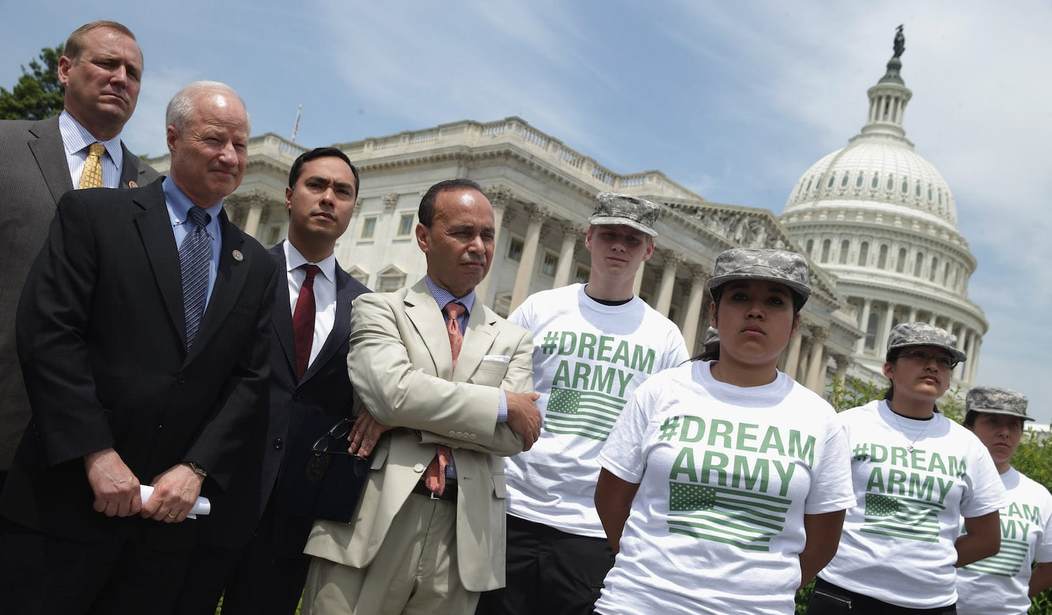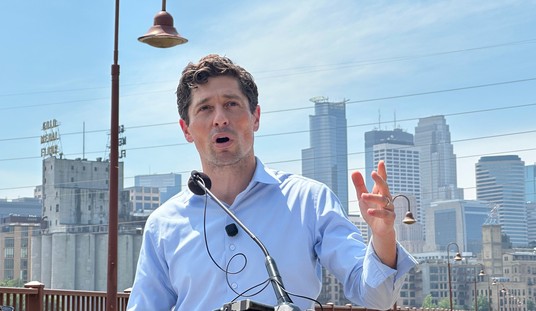The Supreme Court on Tuesday granted certiorari in United States v. Texas, the case involving President Obama’s plan to implement the “Deferred Action for Parents of Americans and Lawful Permanent Residents” program (DAPA). This case, which deals with the scope of the president’s authority to suspend deportations of illegal aliens, could have major implications for standing doctrine and presidential powers under the Constitution.
Back in 2012, the Department of Homeland Security (DHS) announced the Deferred Action for Childhood Arrivals (DACA) program. In announcing DACA, DHS explained that — pursuant to its “prosecutorial discretion” — it would only proceed with deportation against certain young people who have not legally immigrated to the United States if five criteria were met.
Furthermore, DHS set up an application process to allow individuals to apply for and obtain something like a declaratory judgment by DHS that they qualified for this “deferred action.”
In 2014 DHS created DAPA, which expanded the DACA program to cover adults with citizen children, or with children who qualify for DACA.
Now, this “lawful presence” granted by DACA/DAPA never guaranteed an enforceable right to remain in the United States. DACA/DAPA beneficiaries remain in violation of U.S. immigration law.
But under DACA/DAPA, DHS made a promise that it would not enforce the law against these classes of people, amounting to 1.2 million qualifying persons under DACA and 4.3 million qualifying persons under DAPA. DHS is also granting them Employment Authorization Documents, or work permits, which these individuals would not otherwise be entitled to.
This class-wide suspension of the nation’s immigration laws under the DACA/DAPA program struck many people as a flagrant violation of the president’s duty to “take care” that the law be faithfully executed under Article Two, Section Three of the Constitution. In fact, a number of states sued the federal government to block DAPA.
According to the states, the promise not to prosecute under DAPA has binding downstream legal consequences, as “lawful presence” entitles individuals to certain benefits, including the right to obtain a driver’s license and to receive certain unemployment compensation. The states claim these benefits result in states incurring enormous costs in law enforcement, education, and health care.
A federal judge in Texas did issue a preliminary injunction in February 2015, blocking DAPA, and the Fifth Circuit upheld that injunction on appeal this past November.
Importantly, these rulings were limited to whether the DHS action in promulgating DAPA violated the Administrative Procedure Act (APA) by not complying with statutorily required “notice and comment” rulemaking, and whether an injunction had been properly issued.
The federal government filed for Supreme Court review (certiorari) immediately, and it limited the “question presented” (what they want the Supreme Court to rule on) to the APA claims.
Specifically, the federal government wanted the Supreme Court to rule that the states did not have standing to challenge the DHS action, that the DHS action was not “arbitrary or capricious,” and/or that the DHS action did not require APA public notice-and-comment prior to adoption of the program.
Responding to the federal government’s filing, the states asked for and received an extension to file their brief in opposition to certiorari. In their brief, the states argued that the possible questions presented included not only the APA claims, but also “whether DAPA is contrary to law or violates the Constitution.”
The Court on Tuesday granted certiorari, and rather than limiting the issue the way the federal government requested, the Court took up the states’ suggestion and requested briefing on: “whether the [DHS action] violates the Take Care Clause of the Constitution, Art. II, §3.”
This is hugely important. This question was fully briefed at the district court level, but it was not a part of the preliminary injunction order that is on appeal. The Supreme Court now has two major issues it could decide this term on the president’s administrative immigration amnesty program.
First, the APA questions all revolve around the notion of prosecutorial discretion. We know that the president has a constitutional duty — and right — to enforce the laws. This involves inevitable decisions about how to expend scarce resources. The Department of Justice routinely settles cases and declines to prosecute where they think the interests of the public are served by doing so, even where there might be adequate evidence to secure a conviction. But what if DOJ announces in advance that there is an entire class of persons exempt from the law?
Doesn’t this go too far? Does prosecutorial discretion give the president a general license not to enforce a particular law? At the very least, if this changes the rights and obligations of individuals, isn’t this the type of decision that, according to DAPA, must be published in the Federal Register before becoming final, allowing for public comments and revision prior to appearing in its final form?
This is an important and unsettled question in administrative law, and it does raise separation of powers issues. Nevertheless, invalidating the DHS action on this basis merely would require DHS to go through a few more hoops before reissuing a decision and going forward exactly as planned.
More fundamental is the question the Supreme Court added when it granted certiorari: is prospectively announcing an entire class of persons exempt from an otherwise applicable statute a violation of president’s duty to faithfully execute the law? A ruling on this question could have sweeping consequences for how a president does business. A ruling by the Court would have to distinguish between ordinary uses of prosecutorial discretion, and unconstitutional abdication — no easy feat.
Failing to adequately demarcate a line here would either turn Texas v. United States into a “for this case only” decision with no future consequences, or it could mean a sweeping decision that strongly limits executive discretion in a host of areas besides immigration enforcement.
Whatever the result, this is a potential blockbuster case, and a decision before the Court’s term ends in June will undoubtedly color the presidential race.









Join the conversation as a VIP Member